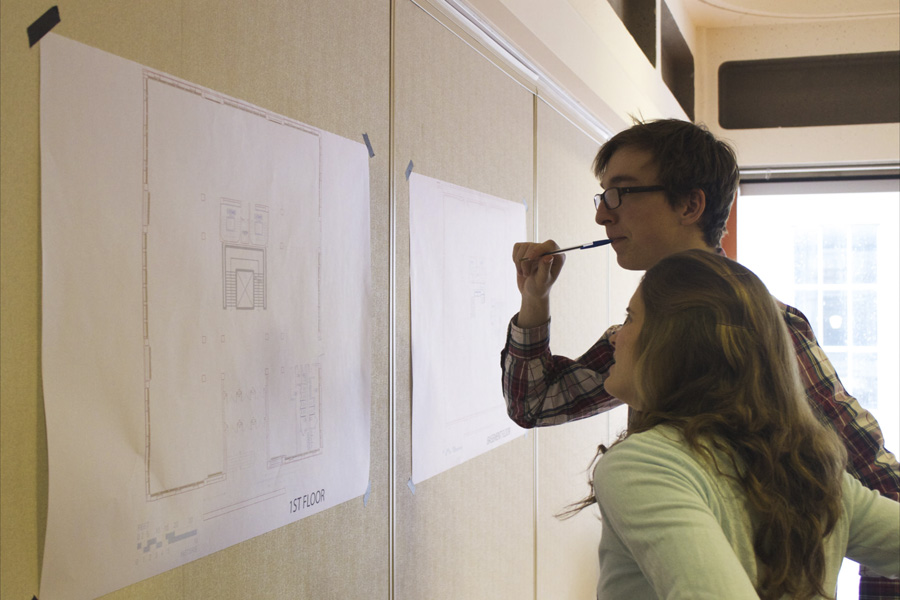Last Friday, the Students’ Society of McGill University (SSMU) held a strategic summit on student space to assess students’ priorities for the SSMU Building. The summit kicked off SSMU’s month-long campaign to determine how the building’s space will be used after Voyages Campus’s sublease ends in May. Possibilities presented at the summit included new student space food service options, such as a cheap, sustainable, student-run café.
“SSMU in the past has done a lot of strategic summits, but this one is really exciting because it’s really real,” Allison Cooper, SSMU’s vicepresident of clubs and services and one of the SSMU Building’s managers, said. “We have a lot of changing space going on.”
Twenty participants, including students, Student Services coordinators, and SSMU executives, attended the event to engage in dialogue about students’ aspirations for the building.
SSMU President Josh Redel invited attendees to draw their ideas for student space onto five blank floor plans—one for each level of the SSMU Building. “It could be as simple as a vegan restaurant, or you could literally draw offices in—it could be as much or as little as you want,” Redel said. “You’ll be seeing these [floorplans] around campus for the next month and a half as well, urging students to get involved.”
Daphne Ben David, a U3 environment student and Organic Campus volunteer, asked SSMU to avoid leasing out space to large businesses.
“Something really important to us is local and organic initiatives,” Ben David said. “I don’t personally see the value in another big franchise. If we started an organic co-op, students would be able to support themselves.”
One of the main discussion topics was the possibility of introducing a student-run café to the building. Plans for such a café have been in the works for over a year, but stalled last September due to concerns about the project’s financial feasibility.
Participants at the summit raised concerns about costs, health, student management, sustainable choices, dietary restrictions, and hiring student staff. Overall, however, students were enthusiastic about the idea of such a project, and optimistic about overcoming potential difficulties.
“It’s a good way to provide students from different faculties with different skills,” Anna Cybulsky, U2 engineering, said. “For management students, even if they’re not making a lot of money for the work they do, it’s just a good project for them to get good experience. So I don’t think it should be a problem to make [a student-run café] profitable.”
Students agreed that the SSMU building needs a comfortable, lounge-like location where students can eat, socialize, and study without feeling rushed, and suggested that this kind of a setting does not currently exist on campus.
Amanda Unruh, Health Promotion coordinator at McGill, expressed concern over the nutritional value of food options currently available on campus and those that might be available in the future. She also pointed to the internship program at Macdonald campus as a potential way to get students involved in the building.
“I work quite a bit with the dietetics program at [Macdonald Campus], and they’re always looking for placements for students,” she said. “That’s something to look into, in terms of a sustainable internship program.”
Sustainability and pricing were also focuses of the summit. Cooper suggested that reusable dishware would better aid waste management in the building, while equitable pricing would attract more students.
“Pricing is important to students,” she said. “[We should have] social equity in the menu—being able to have a three dollar dahl option, then also the more expensive butter chicken—to have it accessible to all.”
Throughout the summit, SSMU executives stressed the importance of student input regarding changes to space use in the SSMU Building.
“We have the funds to do it,” Vice-President Finance and Operations Jean Paul Briggs said. “I’m very interested in getting feedback … We want a dialogue—it’s about engaging with students.”









